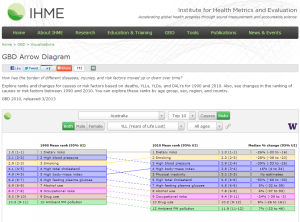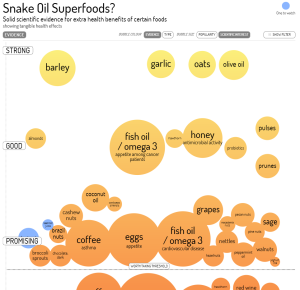While preparing for my Progressive Australia speech on healthy food yesterday, two factoids caught my attention:
1. The amazing Credit Suisse trashing of the sugar industry notes that calories derived from drinks (i.e. liquids) are not recognised by the body as contributing to our satiety. Hence, the body continues to seek and consume food as if calories from soft drinks, fruit juices etc. had not been consumed:
“Liquid and solid sugar calories are handled differently by the body. The energy that is obtained through beverages is interpreted and processed differently by our body from energy that is obtained through solid foods, even if the overall quantity of calories consumed is the same. Sugar by itself is a poor source of calories as it provides little nutritional value. Not surprisingly, the public debate has centered on soft drinks and the role they have played in this issue.”
2. Michael Moss’ NYT article on addictive junk food refers to Vanishing Caloric Density in Cheetos:
“To get a better feel for their work, I called on Steven Witherly, a food scientist who wrote a fascinating guide for industry insiders titled, “Why Humans Like Junk Food.” I brought him two shopping bags filled with a variety of chips to taste. He zeroed right in on the Cheetos. “This,” Witherly said, “is one of the most marvelously constructed foods on the planet, in terms of pure pleasure.” He ticked off a dozen attributes of the Cheetos that make the brain say more. But the one he focused on most was the puff’s uncanny ability to melt in the mouth. “It’s called vanishing caloric density,” Witherly said. “If something melts down quickly, your brain thinks that there’s no calories in it . . . you can just keep eating it forever.”
Put together with the phenomenal success of lap banding*, this suggests that satiety is mediated by mechanical receptors at the top of the stomach. I’m sure this isn’t rocket science and could be found in any physiology text book, but its unusual that it hasn’t made it into the public discourse.
It explains why fruit, but not fruit juice, is good for you – it is to do with fibre, but only when it persists in a structure, and nothing to do with its ability to magically slow absorption of sugars into the body etc.
It explains why most junk foods are melt in your mouth – so that by the time it hits the stomach, it’s in too much of a liquid form to stimulate the stomach’s mechanical receptors.
Again, unless you’re putting lap bands into people, the only way to profit for this is by recommending people eat solid foods which fill them up.
* Lap Bands must make it easier for any food (including liquids) to trigger the mechanical receptors in the stomach.
Credit Suisse Investment Report on Sugar: Credit Suisse – document-1022457401
Michael Moss’s NYT Article: The Extraordinary Science of Addictive Junk Food – NYTimes



![WP_20131103_010[1]](http://blog.panicola.com/wp-content/uploads/2013/11/WP_20131103_0101-300x168.jpg)